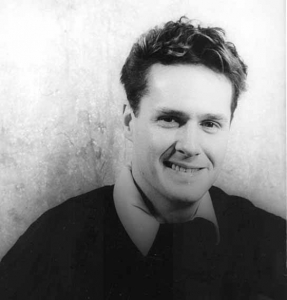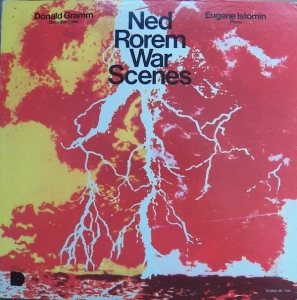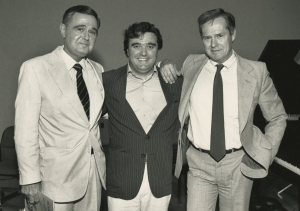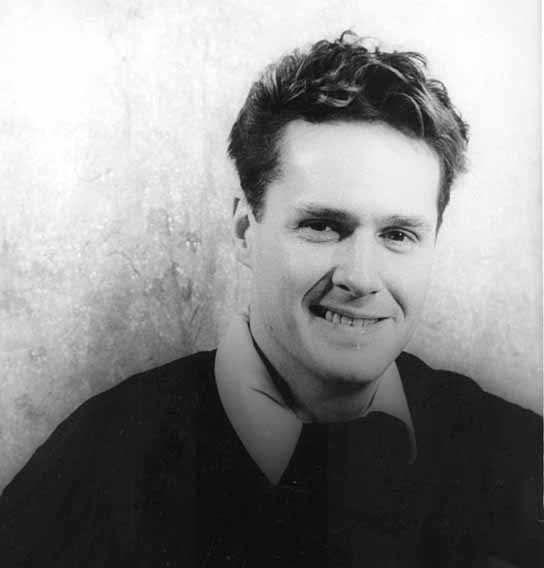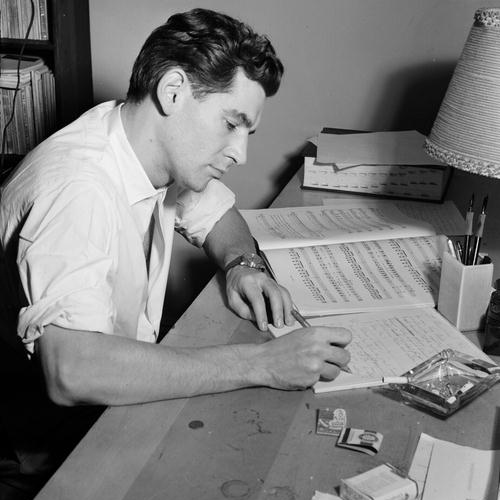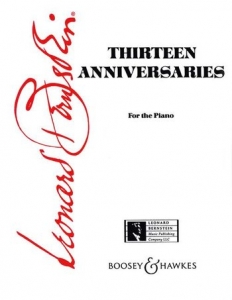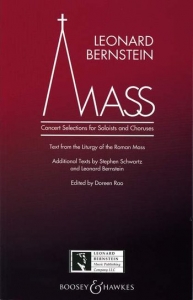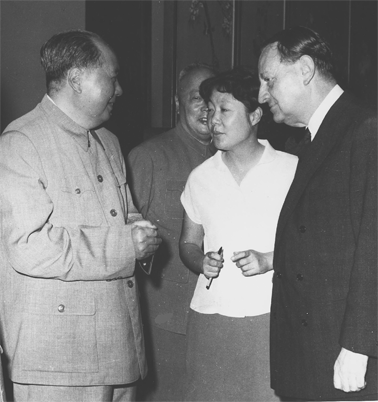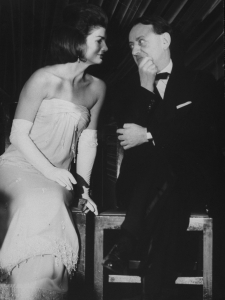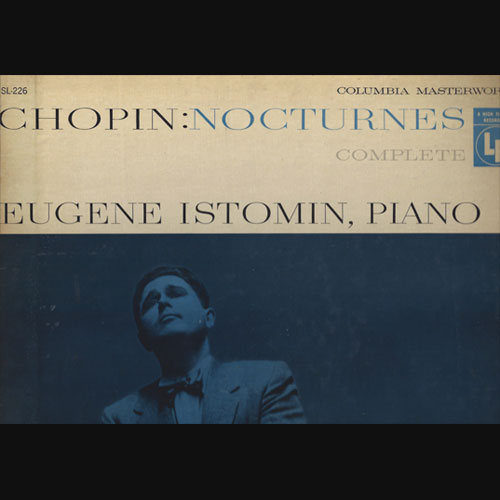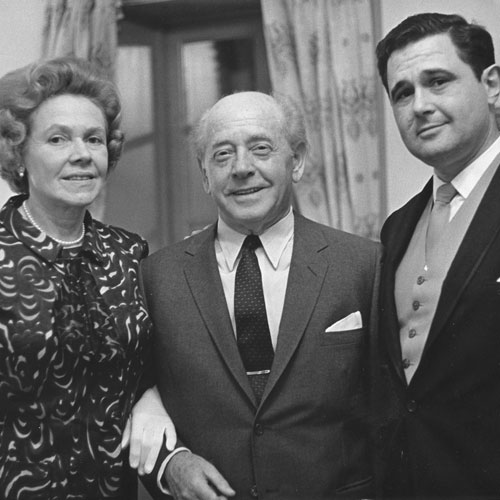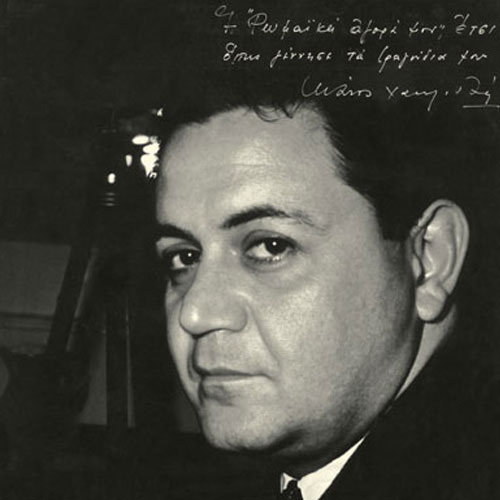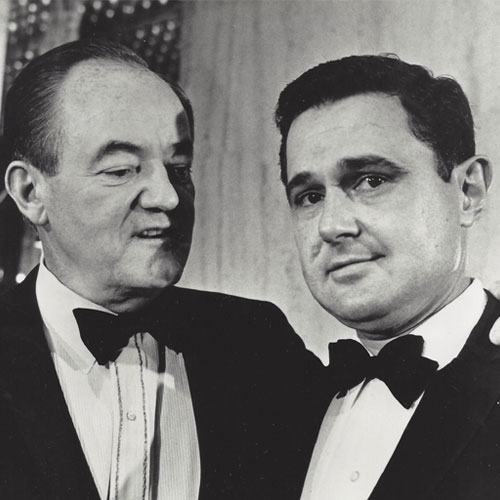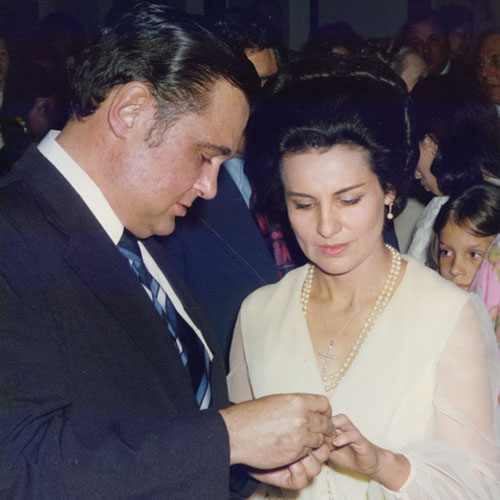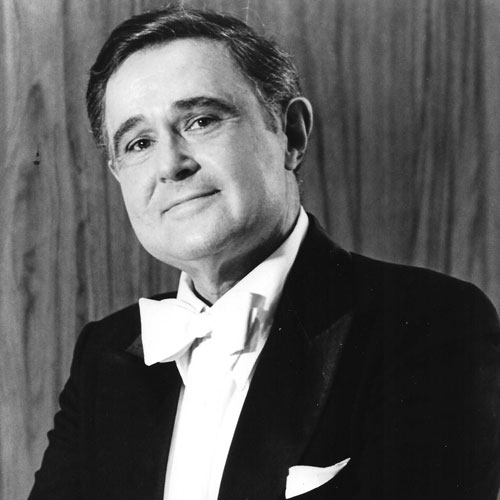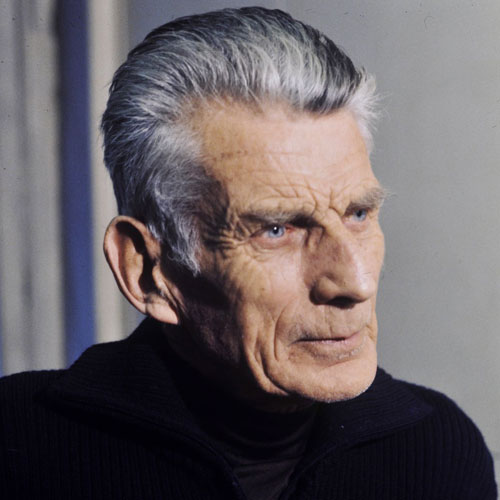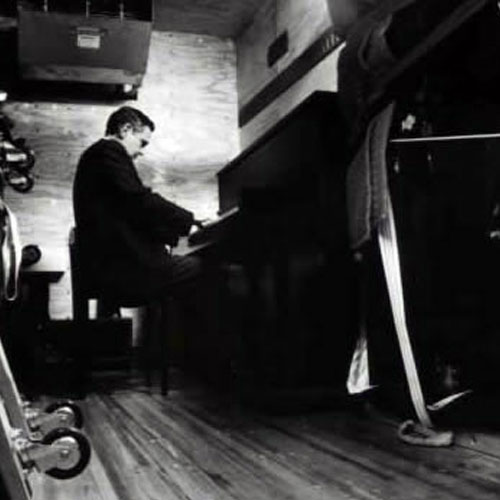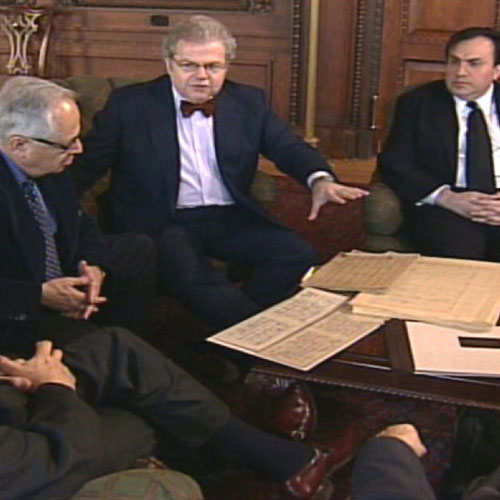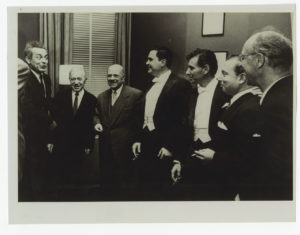 Eugene Istomin aurait dû avoir une collaboration suivie, une complicité même, avec Leonard Bernstein, son aîné de sept années. Ils avaient été ensemble au Curtis, où ils étaient très proches, malgré leur différence d’âge. Istomin était déjà fasciné par son génie et son charisme. Quant à Bernstein, il avait déclaré, après une audition des élèves du Curtis :
Eugene Istomin aurait dû avoir une collaboration suivie, une complicité même, avec Leonard Bernstein, son aîné de sept années. Ils avaient été ensemble au Curtis, où ils étaient très proches, malgré leur différence d’âge. Istomin était déjà fasciné par son génie et son charisme. Quant à Bernstein, il avait déclaré, après une audition des élèves du Curtis :
« Eugene, tu es une oasis dans le désert ! Une oasis dans le désert!”. Ils étaient amis et le sont restés tout au long de leur vie, se témoignant souvent leur affection et leur estime. Istomin défendit énergiquement Bernstein compositeur lorsque certaines de ses œuvres furent mal accueillies par la critique, en particulier Mass, qui avait été huée lors de sa création pour l’inauguration du Kennedy Center. Parmi les rares œuvres contemporaines de son répertoire figurait ses Anniversaries qu’il joua dans de nombreux récitals. Bernstein le remercia en lui dédicaçant sa partition, évoquant leur passé commun et « all what’s to come ».
En fait leurs collaborations avec l’Orchestre Philharmonique de New York furent assez rares. En 1958, la première année de Bernstein comme directeur musical à part entière, ils jouèrent le Concerto de Schumann. Il y avait même un projet d’enregistrement mais Columbia préféra finalement associer Istomin et Bruno Walter. En 1962, Istomin participa à l’inauguration du Lincoln Center avec le Concerto pour 4 claviers BWV 1065 de Bach aux côtés de ses amis Gary Graffman et Leon Fleisher, puis joua le Deuxième Concerto de Brahms pour un cycle au cours duquel Bernstein célébrait son 500ème concert à la tête du New York Philharmonic. Il y eut enfin en 1968, dans une situation politique extrêmement tendue, une série de concerts qui associait le 4ème Concerto de Beethoven et la Sinfonia de Berio, en création mondiale. Ce fut un moment difficile pour Istomin, qui reçut quelques sifflets à son arrivée sur scène, pour la première fois de sa vie. Les raisons de ces sifflets étaient éminemment politiques et venaient, en plein duel électoral entre Nixon et Humphrey, soit de républicains convaincus soit de démocrates peu favorables à la candidature de Humphrey, qu’ils ne jugeaient pas assez ouvertement opposé à la poursuite de la guerre au Vietnam. Or Istomin était le président du Comité de soutien des Ecrivains et des Artistes à la candidature de Humphrey. Bernstein avait refusé son concours malgré l’insistance d’Istomin. Il lui expliqua que Humphrey était sans doute quelqu’un de bien, mais qu’il pensait que le peuple américain avait besoin d’être « cautérisé » par Nixon pour retrouver le chemin de l’idéal ! Sur le plan musical le désaccord avait été grand aussi, Bernstein ayant délibérément choisi un tempo exagérément lent dans l’andante du concerto…
Quelques mois plus tard, Bernstein abandonnait la direction musicale du New York Philharmonic et n’acceptant plus de poste fixe, les occasions devenaient plus difficiles à trouver. A plusieurs reprises Bernstein dit à Istomin qu’il voulait absolument faire un concerto de Mozart avec lui, mais rien ne se fit.
On peut imaginer que Bernstein avait été blessé qu’Istomin n’ait pas insisté pour enregistrer le Concerto de Schumann avec lui, comme c’était prévu, et qu’il lui ait préféré Bruno Walter. Il y a aussi le mystère de la personnalité infiniment complexe de Bernstein. Il y eut surtout cette violente discussion autour d’Humphrey et de Nixon dans laquelle Eugene n’avait pas mâché ses mots.
Cela n’empêcha pas leurs relations de redevenir très cordiales et de le rester jusqu’à la mort de Bernstein, qui fit dire à istomin : « En fait je ne pouvais pas l’imaginer vieillir ! »
Dans une interview à John Gruen pour le New York Times en 1971, Istomin avait dit toute son admiration pour Bernstein compositeur, après le mauvais accueil réservé à Mass lors de l’inauguration du Kennedy Center : « Je pense que c’est le grand œuvre de Bernstein. Pour moi tout sonne juste! Vous avez son âme et ses convictions, et tout son fantastique talent présenté sur un plat d’argent. Oui c’est « populaire ». Non ce n’est pas hétéroclite. C’est du pur Bernstein. Si vous l’aimez, vous aimerez l’œuvre. C’est ce que je fais. Dans mon univers, il y a de la place pour Stravinsky, Nono et Bernstein. Je suis fatigué de voir un des plus grands talents du siècle se faire éreinter et calomnier. Profitons plutôt de lui tant qu’il est là!»
